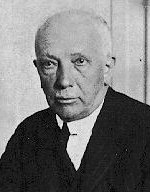

RICHARD STRAUSS
11th June 1864 --- 8th September 1949
Copyright 1994-1998 Encyclopaedia Britannica
Last Updated on 2021
By Steven Ritchie
And now for the Music

Thanks to Kevin T. Perez for sequencing the music below, Email ( libear @ yahoo com).
New (3429)"Also Sprach Zarathustra, Sunrise, Opus.30". Sequenced by Kevin T. Perez. Thanks to Mike Catelinet for sequencing the music below, Email (catelinm @ hotmail com).
New (3433)"An Alpine Symphony, Mov.1, Opus.64". Sequenced by Mike Catelinet. New (3432)"An Alpine Symphony, Mov.2, Opus.64". Sequenced by Mike Catelinet. New (3431)"An Alpine Symphony, Mov.3, Opus.64". Sequenced by Mike Catelinet. New (3430)"An Alpine Symphony, Mov.4, Opus.64". Sequenced by Mike Catelinet. Thanks to Gary Goldberg for the version based on Bob Goodyear piece. Email (GaryG @ ix netcom.com)
(1816)"Death and Transfiguration". Sequenced by Gary Goldberg. Thanks to Bob Goodyear for the music below.
(1774)"Death and Transfiguration". Sequenced by Bob Goodyear (76)"Wiener Philhoniker Fanfare". Sequenced by Peter Jan Van Dijk
(494)"Don Quixote". Sequenced by Peter Glasson
If you done any Classical pieces of say for example, Delius, mozart, and so on etc, please email them to the classical music site with details to "classical (@) ntlworld.com" written this way to stop spammers just remove spaces and brackets for email address, thank you.
Visitors to this page --



Back to Classical Midi Main Menu click "HERE"